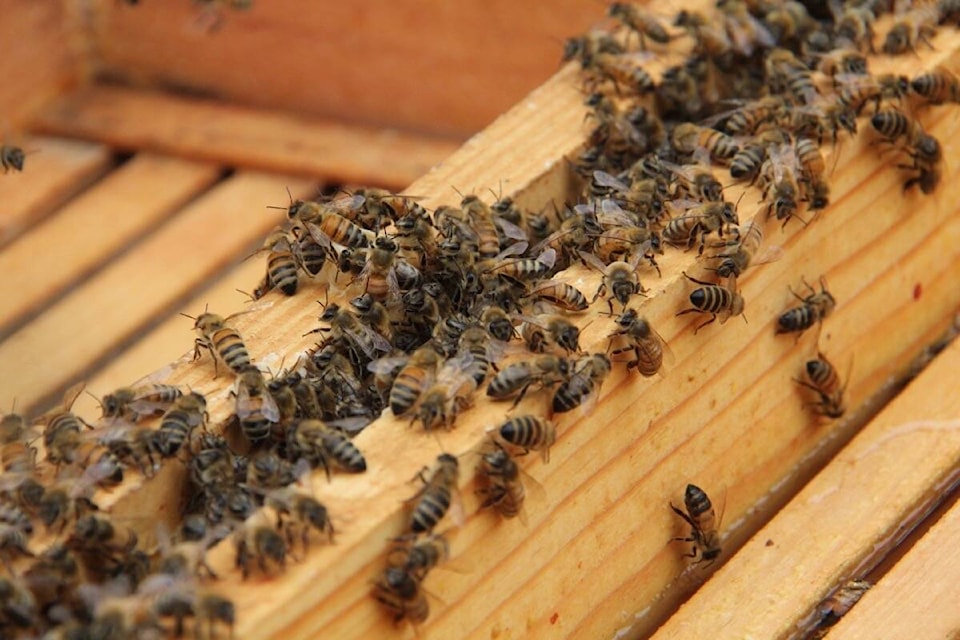Swarming season is early for honeybees in Greater Victoria thanks to a mild winter, and that comes with good and bad repercussions.
Beekeeper Bill Cavers had his first call in mid-April, a couple weeks ahead of the usual start to swarm season.
Normally, bees go dormant mid-November, but that didn’t happen this winter, the president of the Capital Region Beekeepers Association explained. It’s really starting to pick up now, with the group’s swarm hotline receiving six-to-eight calls a week.
“This year many members had evidence bees were continuing to reproduce and be active right though December and into the cold spell,” said Cavers.
Unfortunately, beekeepers rely on a “brood break” to treat the hives for mites without harming the other inhabitants.
“We had less opportunity to kill the mites because (the bees) were active and reproducing,” Cavers continued.
Mites are a parasitic infestation and have spread across North America over the last decade or so. A mite will latch on to a bee and be carried around. When two bees are alight near each other, it can migrate to another and infect another hive. They climb into larvae cell and chew away at the bee’s liver. Mites can also bring other diseases with them.
On the positive side, an early swarm season signals healthy honeybee populations, and a good honey season.
A swarm is a hive’s natural way of reproducing.
READ ALSO: Victoria honeybee hobbyist laments cool Vancouver Island spring
“When the hive becomes crowded, half the bees will leave with the queen and they’ll leave behind some queen pupae,” said Cavers. “So you get a swarm leaving to start a colony somewhere else and the colony that’s left will produce a queen.”
Honeybees in swarms are usually docile, but can be a hassle.
“When the swarm lands on your car or when it lands on the goal post of a soccer game or football game, it’s not so convenient,” Cavers said.
He has personally picked up picked swarms off front doors, garden fence posts, and other inconvenient areas of private and public land.
VicPD responded to a swarm Wednesday (May 22) near the busy intersection of Blanshard and Fisgard streets, after several people called 911. Police in turn, called in a beekeeper, Chief Del Manak reported on social media later that day.
Residents can call on the experts when they find a swarm; a dozen or so members of the CRBA are on hand to help homeowners and businesses collect and relocate swarms of honeybees.
“They’re a valuable contributor to the environment so get someone out to safely and gently collect them,” Cavers said.
When the association gets a call they’ll first determine whether it’s honeybees, bumbles or wasps.
“We do not collect wasps,” Cavers noted.
Then they’ll ask for more information on the swarm site, how accessible it is and how long the swarm has been there.
If manageable, a beekeeper will come and collect the swarm. It’s a win for all three parties, the person inconvenienced by the swarm, the beekeeper who gathers a new brood, and the bees having a statistically higher survival rate in a hobbyist hive than in the wild, Cavers said.
Swarm season traditionally runs through June. To report one call 250-900-5787 or email swarms@capitalregionbeekeepers.ca.
Visit capitalregionbeekeepers.ca for more information.
READ ALSO: Invasive lizard population spreads across Vancouver Island
